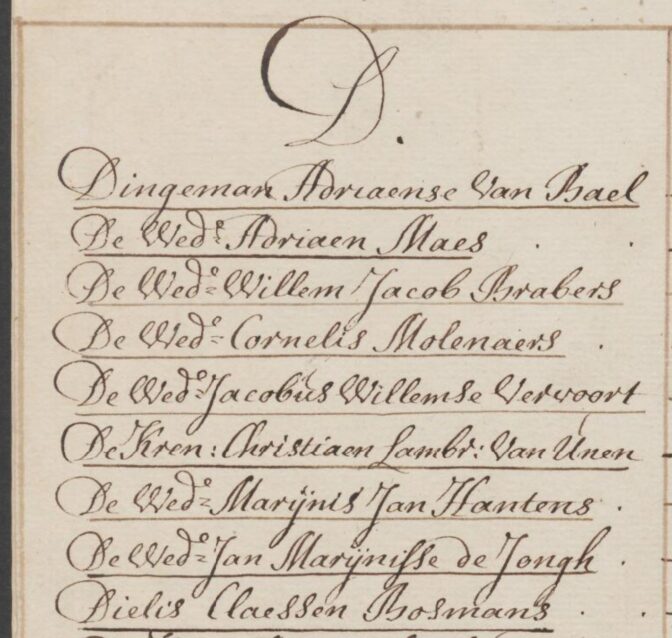If you’re going through tax records or court records, you might get lucky and find a contemporary (hand-written) index in the front or the back. These indexes may have some quirks:
- They may be by first name, not last name. This particularly occurs in regions where people did not all use hereditary surnames but used patronymics or farm names.
- They may be grouped by the first letter only, not strictly alphabetical. Within each letter, the entries would then be in page order. So Andries on p. 1 would be before Abraham on p. 2.
- They may refer to the folio number, rather than page numbers. With folio numbering, only the right page is numbered. The right page is marked with an r (or without a mark) while the next (reverse) side is marked with a v for “verso,” the Latin for “reverse.” Sometimes they leave off the v so you may have to turn the page if you can’t find the entry.
- Indexes may only index the main parties. The actual record may have other names, like the purchaser, the neighbors, the other sellers, etc.
- In the case where the parties are heirs, widows, or children, they may be indexed under the man’s/father’s name.
- Children might be indexed under the “k” for “kinderen” [children], widows under the “w” for “weduwe” and heirs under the “e” for “erfgenamen.” In the example below, such cases were indexed under “d” for “de weduwe” [the widow], “de kinderen” [the children], and “de erfgenamen” [the heirs]. If you can’t find your person, browse the whole index.

Index with widows and children indexed under “D”

